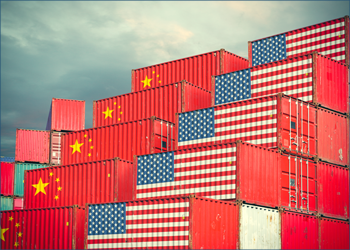Hedging Against a Trade War
As a small business owner, the words “trade war” and “tariff” can be unsettling. When cost uncertainty is on the horizon, you will want to be prepared as much as possible. Here are some ideas to help you navigate your business through a possible trade war.
Tariffs defined

A tariff is a tax on imports imposed by a governing authority. The tax can be on specific goods and services, countries of origin, or both. The current tariff conversation appears to be centered around reducing the U.S. trade deficit with China and other trading partners. When a tariff is placed, often times the affected country will impose retaliatory tariffs to protect its own businesses and reset the balance of trade to their favor.
Ideas to prepare your business
Identify at-risk areas. Remember, suppliers impacted by tariffs are sourcing some or all of your purchases from countries outside the U.S. So pay attention to which suppliers AND items are most vulnerable to tariffs. Currently this includes steel, aluminum, and imports from China. But don’t overreact; the average tariff on all U.S. imports is still less than 2 percent with over half of the imported items having no tariffs. On the other hand, things like clothing and shoes could be subject to ever-increasing tariffs.
Seek out additional suppliers. Once you have identified possible items that could be vulnerable to tariffs, determine the source of the item with your key suppliers. If the items in question are an important component to your business, research additional suppliers who obtain their merchandise from a non-tariff source. Create new relationships now to increase your chances of minimizing your added expenditures later.

Know your breakeven point. The breakeven point for your business is where your total revenue equals your total costs. Knowing this point is helpful in forecasting breakeven sales and your ability to absorb price increases from key suppliers. This will help you identify if, when and how much you will need to raise prices.
Identify areas with potential to cut costs. Do an assessment of all your costs now and classify them as essential or non-essential. If a tariff is going to impact your margins, you may be able to salvage your overall profitability by cutting some of your non-essential operating costs.
Tweak your supply chain timing. There might be potential to manage your inventory to create a buffer to absorb a tariff, if you think the trade war will be short-lived. Consider creating a working capital account to allow yourself purchase flexibility to make your costs more predictable during your key selling season. You might even be able to negotiate a staggered delivery schedule with your supplier to manage storage concerns.
For now, try to stay current with tariff news. You may be able to hedge some of the risk that comes with a trade war.

